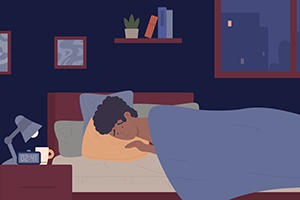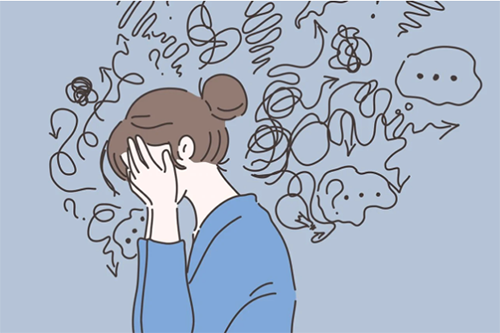
INTRODUCTION
During the COVID-19 pandemic, rates of posttraumatic stress disorder (PTSD) surged in the US. The Centers for Disease Control (CDC) and National Center for PTSD estimate that 5% of adults struggle with PTSD. Over the past five years, rates of PTSD in college students more than doubled. Globally, the World Health Organization (WHO) has found that 1 in 3 people who encounter trauma will go on to develop PTSD. And of those impacted, more than a quarter will experience severe symptomatology. 1,2,3
First recognized as “shell shock” in veterans returning from the Great War, our understanding of the brain and body’s response to trauma has evolved with time. As has our definition of trauma. PTSD is characterized by the following constellation of symptoms:
- Intrusive re-experiencing (nightmares, flashbacks)
- Avoidance (of places or stimuli that recall the trauma)
- Negative alterations in cognition and mood
- Markedly increased arousal and reactivity (sleep disturbance, hypervigilance, irritability)
These symptoms must come in the context of direct experience of trauma or extreme exposure to details of a trauma. Our definition of traumatic events and exposures include the classic exposures like war and violent crime but also now include motor vehicle accidents, extreme weather events, intimate partner violence and ACEs – adverse childhood events. We also recognize that sentinel events can precipitate PTSD as frequently as chronic exposure and serial events can. Our evolving understanding of trauma response has also broadened our diagnostic conceptualization. The WHO has recognized cPTSD or complex PTSD as being on a spectrum with PTSD and borderline personality disorder. That is to say, those who experience trauma may exhibit maladaptive coping strategies and interpersonal struggles alongside hypervigilance, re-experiencing and avoidance.
CLINICAL PRESENTATION
Patients with posttraumatic stress disorder frequently present to their primary care or family medicine providers before ever being seen by a psychiatrist or other mental health specialist. Those with PTSD frequently experience somatic complaints:
- Headache
- Constipation or Diarrhea
- Insomnia
- Changes in Functional Status
Without clear evidence of physiologic changes on exam, many patients leave appointments with unresolved worry, often returning to urgent care or even emergency department settings with similar complaints. Unfortunately, this often leads to a pattern of high utilization of services by patients and compassion fatigue and demoralization for healthcare providers.
When patients report recent or past exposure to trauma, obtaining a subjective history of symptoms alongside objective data is indicated. Many who suffer from PTSD will have co-occurring struggles with:
- Substance Use
- Depression
- Anxiety and Agoraphobia
- Executive Dysfunction or Functional Impairment
While it is often impossible to eliminate confounding variables, trauma and trauma response are often central to many other mental health struggles. And accurately diagnosing PTSD and steering patients towards effective and evidence-based treatments will lead to an overall improvement in functioning and a decrease in suffering.
PATHOPHYSIOLOGY
Traumatic events, whether sentinel or chronic and sequential, elicit a reflexive fear response in the body and brain. Better known as “Fight, Flight or Freeze”, our autonomic nervous system quickly responds to a perceived threat to maintain safety. For those who move on from a traumatic event to experience PTSD, their autonomic nervous system is primed to respond. That is, their brain’s fear circuitry is chronically active, always ready to fight, flee (or freeze) if cues in the environment signal danger. While a car backfiring may elicit a startle response in the average person, those who struggle with PTSD would experience significant autonomic reactivity that may result in elevated blood pressure, heart rate and even panic. Signs of elevated autonomic arousal may include:
- Elevated resting heartrate
- Decreased heart rate variability
- Elevated blood pressure
- Decreased appetite and/or carbohydrate cravings
- Impaired memory and attention
- Insomnia
- Fatigue
COLLABORATION AND CARE
Offering validation and acknowledgement of the severity of symptoms promotes trust with patients who have PTSD. A sturdy alliance with the promise of collaboration often leads to improved health outcomes and reduced utilization of services. Arriving at a formal diagnosis of PTSD is not always easy in primary care settings. The PCL website includes a link to the Primary Care PTSD Screen a 5-item screen designed to identify individuals with probable PTSD. Fortunately, formal diagnosis does not have to occur before symptom management can start.
Psychotherapy is the gold standard for treating PTSD. At the UW, we train providers in Cognitive Processing Therapy though we recognize this is a limited resource and there are other types of short-term, targeted therapy that patients may find helpful. Therefore, a referral to an experienced mental health professional is the preferred treatment approach. If a patient is struggling with co-occurring depression, substance use or severe functional impairments, consideration of involving Social Work would be indicated, as well.
Medication management of symptoms may include:
- SSRIs to target anxiety and low mood
- Prazosin to target nightmares and autonomic reactivity
- AVOID benzodiazepines and hypnotics as these have been shown to worsen prognosis
- Similarly, avoiding alcohol and other CNS depressants is advised
PTSD, like many chronic conditions, impacts entire family systems and the trajectory of many patients’ lives. Screening, diagnosis and intervention are essential so please never hesitate to seek out collaborative support from behavioral health providers including psychiatric consultation from the PCL team!
2. https://www.cdc.gov/mmwr/volumes/70/wr/mm7026e1.htm
3. https://www.who.int/news-room/fact-sheets/detail/post-traumatic-stress-disorder
Additional References
https://hr.nih.gov/working-nih/civil/post-traumatic-stress-disorder-ptsd-2024
https://www.nimh.nih.gov/health/statistics/post-traumatic-stress-disorder-ptsd
Author
Dr. Burns is the medical director of UWMC-Roosevelt Outpatient Psychiatry Clinic. Her practice experience spans academic, research and clinical realms, with a focus on working with patients experiencing treatment-resistant depression, those with co-occurring medical complexities, and patients impacted by hormonal changes related to puberty, pregnancy, gender transitions and menopause. Dr. Burns’ background in the neurosciences and medical psychiatry gives her a comprehensive understanding of the biologic basis of psychiatric illness and the strength of the mind-body connection.
Related Resources
Dr. Burns presented on Navigating PTSD and Elizabeth Lehinger, PhD, presented on What is Complex PTSD? Understanding current evidence and treatment implications as part of the UW Psychiatry and Addictions Case Conference (PACC) series, a free, weekly teleconference that connects community providers from across Washington with UW Medicine psychiatrists, psychologists, and addictions experts. Sessions include both an educational presentation and (de-identified) clinical case presentations allowing providers an opportunity to receive feedback and recommendations from interdisciplinary attendees. CME is available for free or for a small fee. Visit the PACC website for more information.
The US Department of Veteran’s Affairs runs the National Center for PTSD, and their website includes a variety of free information and resources for patients, loved ones, and providers and has content in Spanish and English.


